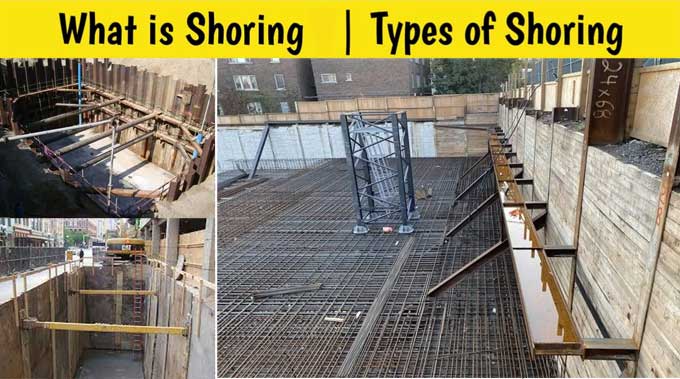Construction projects, ranging from towering skyscrapers to intricate underground structures, require meticulous planning and execution to ensure safety and stability. One critical aspect of construction that plays a pivotal role in achieving these goals is shoring. Shoring involves the use of temporary supports to brace, shore up, or strengthen a structure during construction or repair, safeguarding workers and the surrounding environment. In this article, we will delve into the importance of shoring in construction and explore its various types and applications.
The Significance of Shoring:
Shoring is an indispensable practice in constructions, especially when working on projects that involve deep excavations, foundation repairs, or the constructions of multistory buildings. The primary purpose of shoring is to prevent the collapse of soil, walls, or existing structures, ensuring a secure working environment for construction teams. By providing temporary support, shoring minimizes the risk of accidents and enhances the overall safety of the constructions site.
Types of Shoring:
- Trench Shoring: Trench shoring is essential for projects involving deep excavations, such as utility installations or foundation work. It prevents soil movement and cave-ins by using supports like hydraulic shoring or trench boxes. These systems are designed to withstand lateral soil pressure, creating a secure workspace for construction crews.
- Vertical Shoring: Vertical shoring is commonly employed in multistory construction projects. It supports the vertical faces of a trench or excavation, preventing soil collapse and maintaining the structural integrity of adjacent buildings. Vertical shoring systems, such as soldier piles and lagging or hydraulic jacks, provide essential support during the construction of foundations or underground structures.
- Raking Shoring: Raking shoring is utilized when vertical shoring is not feasible due to space constraints. This method involves inclined braces or struts to provide lateral support to the excavation or construction site. Raking shoring is particularly useful in urban environments where space is limited, allowing constructions to proceed safely in confined areas.
Applications of Shoring:
- Foundation Constructions: Shoring is crucial in the constructions of foundations, especially in areas with unstable soil conditions. It ensures the stability of excavations and prevents collapses during the pouring of concrete or the installation of foundation elements.
- Bridge Construction: Bridge construction often involves working over water or uneven terrain. Shoring systems support the bridge components during construction, providing stability and ensuring the safety of workers involved in the project.
- High-Rise Buildings: In the constructions of tall buildings, shoring is vital to support the weight of upper floors and facilitate safe construction practices. Shoring systems are strategically placed to bear the load during various stages of construction.
Conclusion:
Shoring is an indispensable aspect of constructions that guarantees the safety and stability of structures during the building process. Whether for deep excavations, foundation construction, or multistory buildings. The appropriate shoring system plays a critical role in mitigating risks and ensuring the success of construction projects. Constructions professionals must prioritize the implementation of effective shoring techniques to create secure work environments and deliver projects that stand the test of time.

